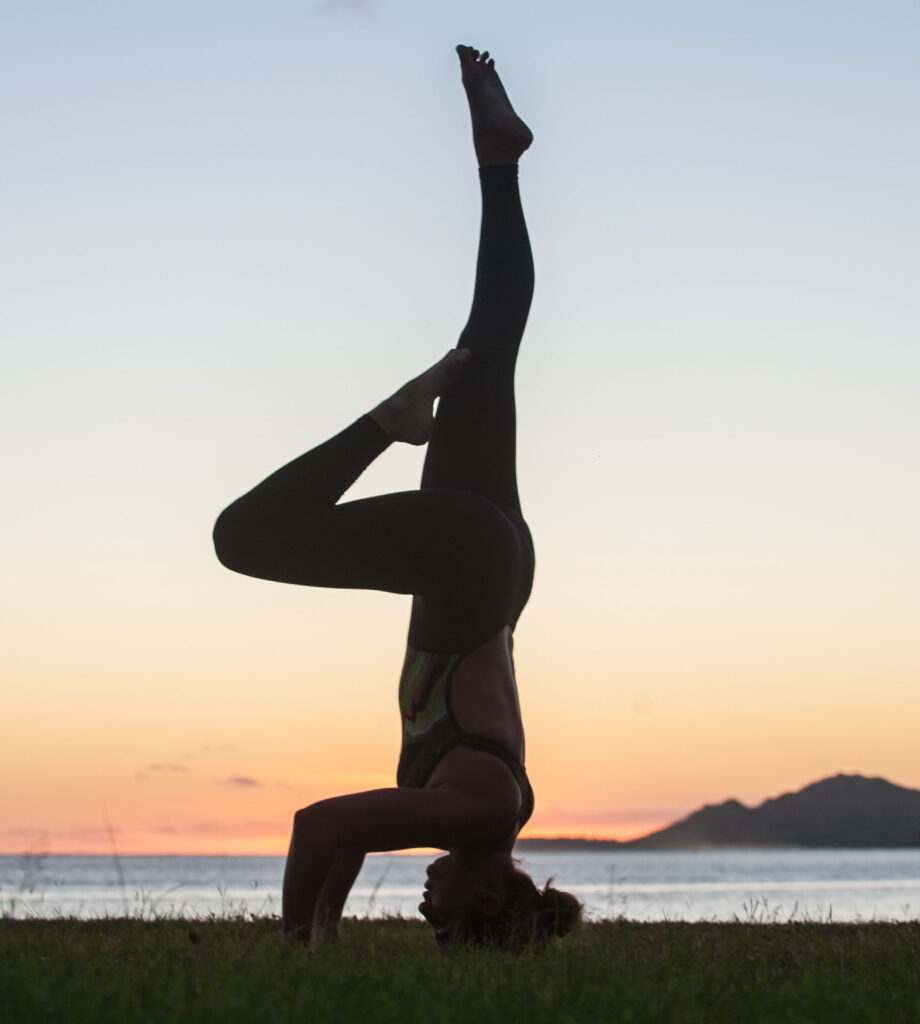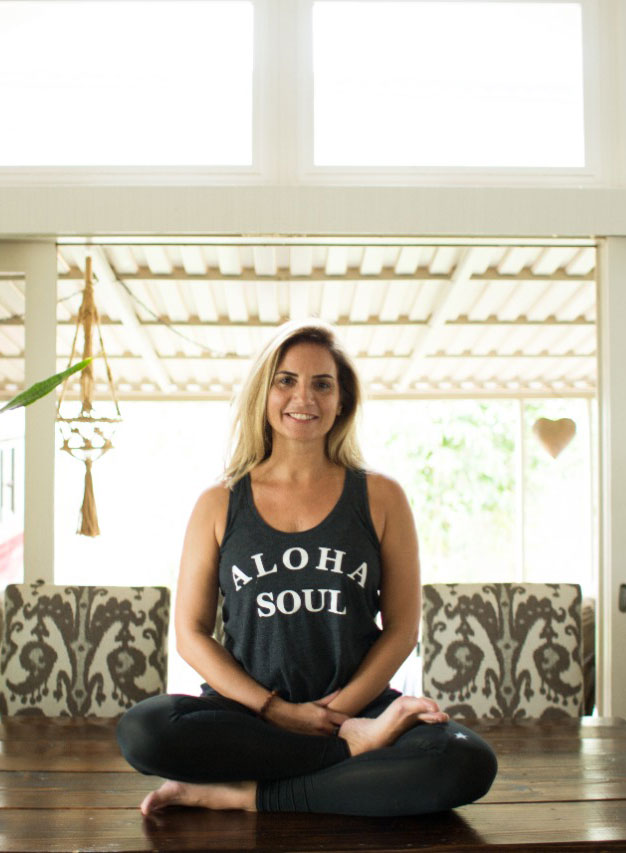I started teaching yoga in the mid-2000s after finishing teacher training at Yoga Hawaii in Honolulu. Interestingly, I started teaching my first classes at Yoga Hawaii itself.
Since then I have completed many other trainings in different styles of yoga. Below are some of the classes I have taught both in the studio and online.
Ashtanga Yoga, is a style of yoga codified and popularized by K. Pattabhi Jois during the 20th century, which is often promoted as a modern form of classical Indian yoga.

Sri K. Pattabhi Jois began his yoga studies in 1927 at the age of 12, and in 1948 he had established the Ashtanga Yoga Research Institute to teach the specific yoga practice known as Ashtanga Yoga,.
Ashtanga Yoga, is the most dynamic style on our list. It connects the breath to each of the positions in the flow.
There are six series of sequences of Ashtanga Yoga,in which the student progresses at his own pace.
Typically, a practice starts with five repetitions of “Surya Namaskara A” and five repetitions of the series “Surya Namaskara B”, followed by a standing sequence.
Then the practitioner begins one of the six sets, followed by what is called the closing sequence.
Ashtanga Yoga, emphasizes the importance of daily practice of a series of defined movements.
“Power Yoga” is a generic term that can refer to any type of aerobically vigorous yoga exercise derived from Ashtanga Yoga.
Vinyāsa is a Sanskrit term often used in connection with certain styles of yoga, which generally refers to a transition between two different positions.
Like many Sanskrit words, vinyāsa it has many meanings; nyasa denotes "put" and vi denotes "in a special way."
The term "Vinyāsa” can also be used to refer to a style of yoga practiced as a breath, linked to a movement.
It denotes a fluid and dynamic form of yoga, connected to breathing or pranayama, in which the transitions of yoga and mudra are incorporated as links within and between asana.
Vinyāsa is also employed as a noun to describe the sequence of poses that are performed between Adho Mukha Svanasanas or Downward Facing Dog as part of a Surya Namaskara or Sun Salutation sequence.
Although this is more correctly termed half-vinyasa, as full-vinyasa returns to complete asanas or standing positions.

Hatha Yoga it is a branch of yoga that emphasizes physical exercises to master the body along with mental exercises to withdraw it from external objects.
The word Hatha means "strength" in Sanskrit, and may have this association because early Indians believed that its practice was challenging and "forced its results to happen" in the yogi.

The term "Hatha Yoga” connotes a system of complementary physical techniques within the broader concept of yoga.
The origins of Hatha Yoga have been credited by some scholars to the Shaivism tradition of the Nath Yogi, particularly to Gorakhnath.
However, according to James Mallinson, the Hatha Yoga has oldest roots and the twenty oldest known texts on the Hatha Yoga suggest that this attribution to the Naths is incorrect.
Hatha Yoga it was a broad movement that developed over a number of sectarian yoga traditions in India, which was available to all and in some formulations and could be practiced by householders (Grihastha).
Important innovations in Hatha Yoga, for example, are associated with the Dashanami Sampradaya and the mystical figure of Dattatreya.
The practice of Hatha Yoga emphasizes proper diet, processes for internally purifying the body, proper breathing and its regulation, particularly during yoga practice, and exercise routine consisting of asanas (body postures).
The methodology sometimes includes sequences such as Surya Namaskara, or “salutation to the sun”, which consists of several asanas performed as a sequence of fluid movement.
The objectives of Hatha Yoga have traditionally been the same as other varieties of yoga. They include physical siddhis (special powers or bodily benefits such as lessening the effects of age) and spiritual liberation (moksha, mukti).
In the 20th century, the techniques of Hatha Yoga particularly asanas (physical postures) have become popular around the world as a form of physical exercise for relaxation, bodily flexibility, strength and personal concentration.
It is now colloquially termed simply as "yoga". It has also evolved into new movements and styles such as Iyengar Yoga, but they are not the same as Hatha Yoga traditional.
The Restorative Yoga it is aimed at injured, stressed or sick people. It is a very gentle style, aimed at those who want to resume their normal quality of life.
This is done with the use of props such as blocks, blankets and straps that are used to support the body.
Each of the positions is specifically chosen and precisely prepared for a specific injury, and held for longer periods of time, to create deep mental relaxation.
Essentially, the aim of Restorative Yoga is to bring the unhealthy body back to a normal state. It does this by activating the parasympathetic nervous system, which is responsible for automatic control of the body. When at rest, the muscles relax.
The idea is to make the poses gently stress the deep tissues, without taking the student out of their comfort zone.
The nervous system does the rest. It works systematically to bring the body back to its normal state, providing healing for the body and mind.
That the calming effect it has on the nervous system allows your body to reach a state of repair, where it can renew and rejuvenate during deep relaxation.
As with anything else, practice makes perfect. The regular practice of Restorative Yoga makes the body less vulnerable to mental injury, stress and illness.
Good examples of using Restorative Yoga these include muscle strains, joint sprains, broken bones, a simple flu and chronic illnesses, as well as emotional stress such as the loss of a loved one, a change in lifestyle, depression and anxiety.

Yin Yoga it's a slow-paced style of yoga with postures, or asanas, that are held for long periods of time – for beginners, it can range from 45 seconds to two minutes; more advanced practitioners can remain in an asana for five minutes or more.

The postures of Yin Yoga apply moderate stress to the body's connective tissues – the tendons, fascia and ligaments – with the aim of increasing circulation to the joints and improving flexibility.
The teaching of Yin Yoga in the Western world was founded by martial arts expert and Taoist yoga teacher Paulie Zink in the late 1970s.
It is now being taught in North America and Europe, largely because of his teachings.
The practice is not intended to be a complete practice in itself, but rather a complement to more active forms of yoga and exercise.
However, it includes the full range of Taoist yoga, both Yin and Yang, and is intended to be a complete practice in itself.
A more meditative approach to yoga, Yin aims to cultivate an awareness of inner silence and bring to light a universal quality of interconnectedness.
Be the first to know about news and special offers.
From time to time, you will also receive love notes and gifts from Suzana.
© 2023 Suzana Maia. All rights reserved. Designed with by Koolden
| Cookie | Duração | Descrição |
|---|---|---|
| cookielawinfo-checkbox-analytics | 11 months | This cookie is set by GDPR Cookie Consent plugin. The cookie is used to store the user consent for the cookies in the category "Analytics". |
| cookielawinfo-checkbox-functional | 11 months | The cookie is set by GDPR cookie consent to record the user consent for the cookies in the category "Functional". |
| cookielawinfo-checkbox-necessary | 11 months | This cookie is set by GDPR Cookie Consent plugin. The cookies is used to store the user consent for the cookies in the category "Necessary". |
| cookielawinfo-checkbox-others | 11 months | This cookie is set by GDPR Cookie Consent plugin. The cookie is used to store the user consent for the cookies in the category "Other. |
| cookielawinfo-checkbox-performance | 11 months | This cookie is set by GDPR Cookie Consent plugin. The cookie is used to store the user consent for the cookies in the category "Performance". |
| viewed_cookie_policy | 11 months | The cookie is set by the GDPR Cookie Consent plugin and is used to store whether or not user has consented to the use of cookies. It does not store any personal data. |